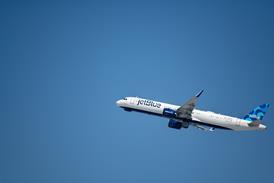The European Aviation Safety Agency (EASA) is expected to publish in the second quarter its long-awaited rewrite of the CS-23 regulations governing small business and general aviation aircraft.
These could transition by year-end to a new set of rules, with consensus-based standards replacing the current prescriptive and weight-based regulations for the category of aircraft below 8,620kg (19,000lb) that can carry up to 19 passengers.
EASA will hold a meeting on 28 March to brief the industry on its plans.
“The USA is a few months ahead of Europe,” says Greg Bowles, director of engineering and manufacturing at the General Aviation Manufacturers Association (GAMA) – the industry trade body which has spearheaded the overhaul of the regulations, known as Part 23 in the USA. The White House approved the rewrite in December 2016 and the changes are expected to be implemented by August, Bowles says.
He describes the new rules as “hugely significant for the business and general aviation sector”.
The rewrite will make it possible to introduce technology in new aircraft that did not exist when the Part 23 regulations were adopted more than 60 years ago. “Until now the [US Federal Aviation Administration] and EASA have managed new technologies by exemption,” says Bowles. This, he explains, requires a lengthy and often costly process to establish a “special condition”.
Under the new rules, manufacturers have the option of showing how a new technology meets existing airworthiness criteria. “The new regulations no longer regulate detailed design solutions, but rather include safety objectives or outcomes,” says Bowles. “The framework is performance-based, nimble and flexible, and means manufacturers are able to take the industry standard and figure out how best they implement it with appropriate levels of oversight.”
GAMA expects the new rules will slash the cost of designing and developing new aircraft and allow the rapid adoption of safety enhancing technologies such as angle-of-attack indicators, envelope protection systems and autopilots.
Source: Flight International


























